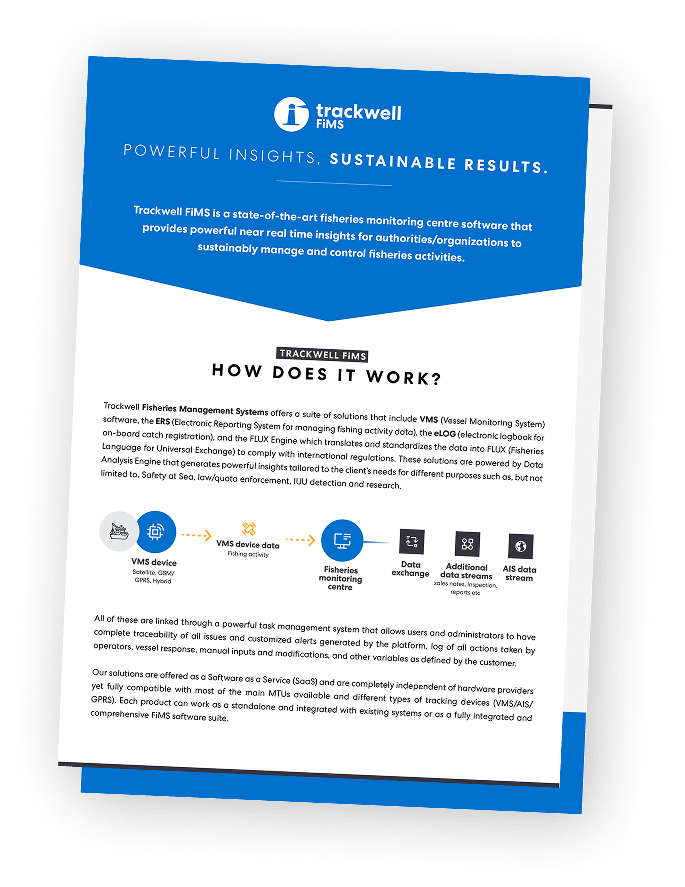Index of content
As the global community pushes forward with its goals of achieving sustainable fisheries, the FLUX module (Fisheries Language for Universal Exchange) is the latest steppingstone towards that objective. The United Nations have stated their believe that the FLUX standard will contribute to the conservation and sustainability of oceans as part of the Sustainable Development Goal number 14. Also, that the FLUX will help in the fight against illegal, unreported, and unregulated (IUU) fishing that continuously threatens fish stocks, ocean biodiversity, and the economic security of fishing communities. Trackwell, an early adapter of the FLUX technology, agrees that the fight against unsustainable fishing practices depends on sharing fishery intelligence between authorities across the world and this new technology will play an instrumental part.
FLUX and its benefits
The standard originally introduced by the European Union (EU) is a is web service-based communication protocol and message format to replace the previous NAF/HTTPS based communications of messages between countries and organizations. The geographical coverage of this standard is global and it is to be used within any fishing industry and fishing operation.
With the FLUX network, Fisheries Management Organizations (FMOs) will have a tool that automatically accesses the electronic data on fishing vessels, as well as trip identification, fishing operations, fishing data, landing and sales information, and license information, and inspection data. Before stakeholders had to adapt different ways of connecting to multiple systems of their partner organizations to share information. This means that for the first time ever FMOs have a communication tool that automates the collection and disseminates the fisheries data in a way needed for sustainable fishery management and for detecting and combating IUU fishing.
Adding to this there are also clear benefits the data collected on fisheries will improve research on since -based fisheries management around the world.
According to figures from 2018, about 20% of all fish and fish products on the world market are estimated to originate from illegal fishing.
FLUX implementation
The FLUX standard defines two “layers”, the Transport Layer and the Business Layer. The Transport Layer handles communications of data between two points within the network. This part is provided with open-source software. The Business Layer defines the message format for different categories of data, organized as “domains”.
The Implementation of the FLUX Business Layer components is an ongoing process, as no off-the-shelf FLUX software is available. This means that Countries and Organizations need to implement their own proprietary software which follows the standard outlined by the Directorate-General for Maritime Affairs and Fisheries of European Commission. (DG MARE).
Trackwell recognized early the importance of this emerging technology and its potential impact on the protection and sustainable management of fisheries resources. Many of Trackwell´s customers have seen the potential environmental & socio-economic benefits, for example for coastal communities that rely on fisheries for economic development, livelihood and food security.
Several nations and regional fisheries organizations have sought out Trackwell´s services and Trackwell is already delivering FLUX business layer modules for its customers in order to enhance the transparency of fisheries practices and reduce overfishing and illegal and under-reported fishing.
Trackwell looks forward to announcing further achievements in this important evolution.
For inquiries, contact [email protected]


